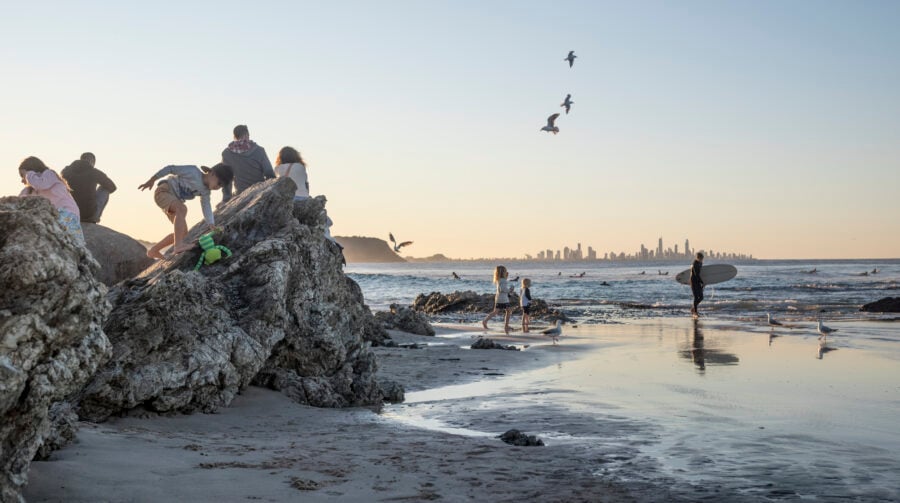Historical treasures escape worst of Qld flood

AS SHOCKED QUEENSLANDERS PULL together to cope with the aftermath of last week’s floods, many of the State capital’s museums and libraries are breathing a sigh of relief after only minimal interruptions to usual summer business. For an unlucky few, however, the big clean up involves salvaging some precious and unwieldy exhibits.
Many of the State’s most important and valuable collections of art, literature, documents and artefacts sit in institutions that ribbon along South Bank and sit flush with the Brisbane River. One of them, the Queensland Maritime Museum (QMM), perhaps by its very nature, is at high flood risk. The steam tug Forceful, Navy frigate Diamantina and light ship Carpentaria are its key attractions.
CEO Ian Jempson, says they mostly had success in keeping the ships safe. “We had attached two headropes and an additional backspring to Forceful and she rode out the torrent safely… Diamantina [usually housed in a dry dock] floated clear of her blocks and two small leaks were subsequently detected,” he says.
Today Diamantina is now “fine and floating well”, he adds, but Carpentaria, built in 1917, is a key concern after she rolled to a 45 degree angle. “Experts are working on devising a strategy. It’ll be another week or so until we know when she’ll be back on her feet.” The QMM will not re-dock Diamantina until the recovery method for Carpentaria is resolved.
Queensland Maritime Museum re-opens after floods
The museum, which re-opened Wednesday, attracted the help of hundreds of volunteers who removed a thick layer of mud from the ground floor and workshops.
The nearby Cultural Centre, home to the Queensland Museum, Queensland Performing Arts Centre, the State Library of Queensland, the Gallery of Modern Art and the Queensland Art Gallery, fared well and “all the State’s art and cultural collections remain safe and secure” – largely thanks to detailed disaster plans that were followed, according to Arts Queensland.
With the buildings located on a riverbank, “logically [flooding is] always something that might happen”, acting State librarian Rory McLeod told Australian Geographic. “The prediction was always that [weather] this year would be tricky.”
The State Library had disaster plans in place and had already begun preparing for potential cyclones in February. After December’s rainfall, “we started to intensify our efforts and then moved a little bit faster,” Rory says.
Brisbane floodwater inundated the museum
A key effort was decomissioning the “massive” quarantine kit that screens all new collections before they are distributed across the library. History, perhaps, holds the key to the State Library’s preparation: nothing of value is stored below the 1974 flood line and critical electronics are also built above the mark.
The car park under the precinct, which was inundated by floodwater, is being thoroughly cleaned so that no part of the library or neighbouring buildings comes into contact with potentially contaminant-laden mud.
At the Queensland Museum, WWI Germany Army tank, Mephisto, was flooded and is currently being assessed for damage. The sole surviving A7V tank in the world and one of only 20 ever built, the Sturmpanzerwagen was designed for muddy conditions, but at 93 years old, is “not really designed for that any more” says Michael Westaway, of the Queensland Museum (QM). Some minor spot rusting has received preliminary treatment, and the vehicle, immobilised at Villers-Bretonneux, “remains in excellent condition” a QM spokesperson says.
Though all collections are held on high levels, QM was also forced to move and dry-ice frozen animal specimens destined for taxidermy.
Other Brisbane icons affected by the flood
The Brisbane Powerhouse performance venue (whose terrace overlooks an artwork illustrating the level of the 1974 floods), located in the city’s New Farm suburb, suffered minimal flooding and damage to machinery.
At Toowoomba on the Darling Downs, the Cobb & Co museum and Australian Education Heritage Museum, among others, suffered damage and further west, the historical Jondaryan Woolshed’s listed Shearers Quarters building lost its roof.
It seems that for now, good planning prevented any loss of any major heritage pieces. As Rory put it, “You never know what’s going to happen. Libraries and museums around the world need to take this as a lesson.”
RELATED STORIES




